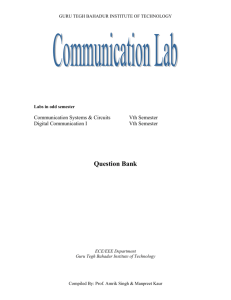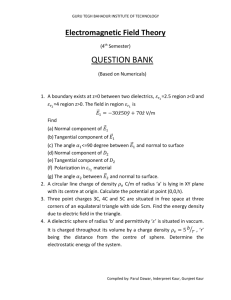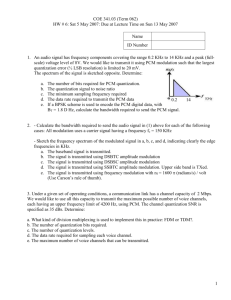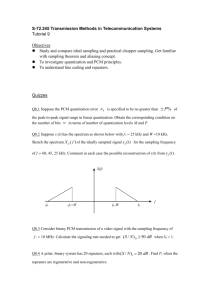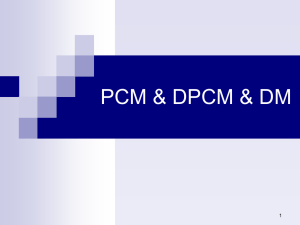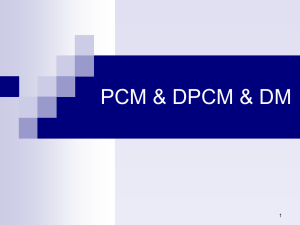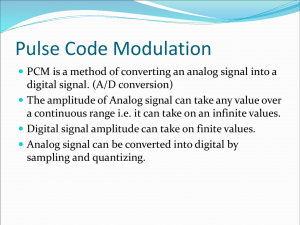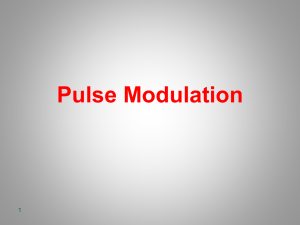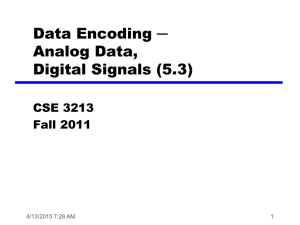Assignement
advertisement
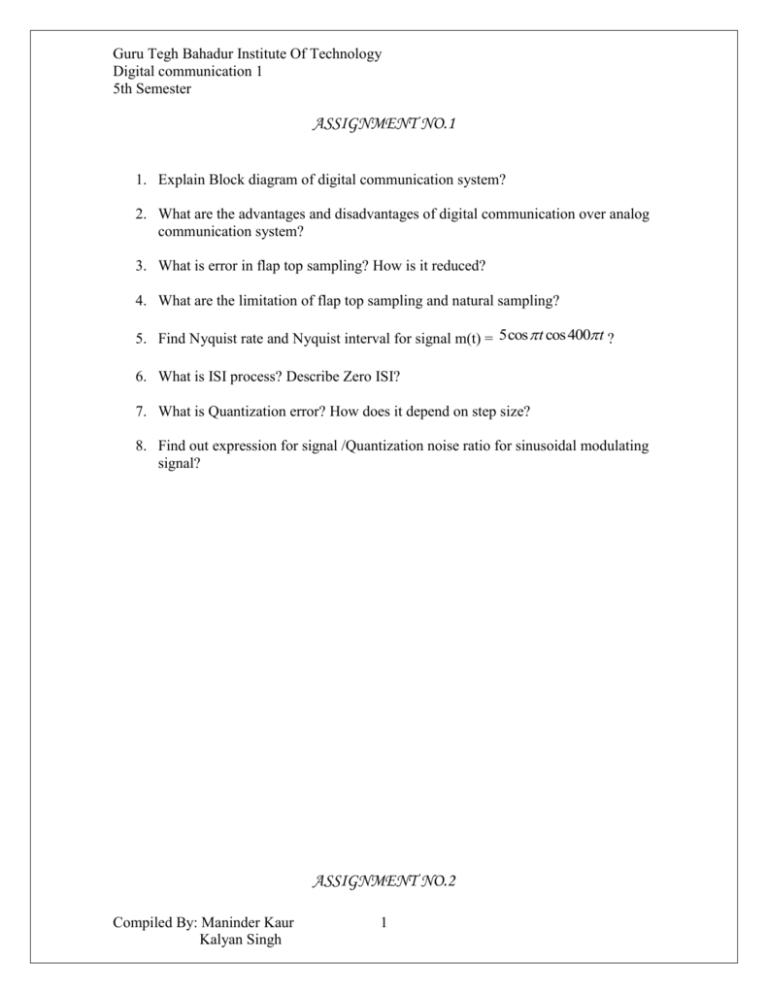
Guru Tegh Bahadur Institute Of Technology Digital communication 1 5th Semester ASSIGNMENT NO.1 1. Explain Block diagram of digital communication system? 2. What are the advantages and disadvantages of digital communication over analog communication system? 3. What is error in flap top sampling? How is it reduced? 4. What are the limitation of flap top sampling and natural sampling? 5. Find Nyquist rate and Nyquist interval for signal m(t) = 5cos t cos 400 t ? 6. What is ISI process? Describe Zero ISI? 7. What is Quantization error? How does it depend on step size? 8. Find out expression for signal /Quantization noise ratio for sinusoidal modulating signal? ASSIGNMENT NO.2 Compiled By: Maninder Kaur Kalyan Singh 1 Guru Tegh Bahadur Institute Of Technology Digital communication 1 5th Semester 1. Define non-uniform quantization. Why it is required. Explain -law and A-law Companding? 2. Write briefly on: a) Aliasing and anti-aliasing b) Apperture effect 3. What is Slope overload distortion and granular noise ? 4. Consider a sinusoidal signal given by m(t ) 3cos t .Find out the minimum number of bits needed to achieve a S/N rate of at least 40 dB? 5. A PCM system uses a uniform quantizer followed by a 7 bit binary encoder .the 6 bit rate of system is equal to 5 10 bits/sec .What is maximum message bandwidth for which system operates satisfactorily? 6. Describe process of quantization. Prove that mean square quantization error is 2 e s 2 /12 where s is step size. 7. What is the function of repeater in PCM system? Is there something analogous to repeater in analog communication? 8. A Television signal having bandwidth of 4.2 MHz is transmitted using binary PCM system. Given that number of quantization levels is 512, determine a. Code word b. Transmission bandwidth c. Final bit rate d. Output signal to quantization noise ratio Compiled By: Maninder Kaur Kalyan Singh 2 Guru Tegh Bahadur Institute Of Technology Digital communication 1 5th Semester ASSIGNMENT NO.3 1. Explain the importance of prediction in Differential pulse code modulation? 2. Give the bandwidth Requirement of PCM? 3. Compare Delta modulation and PCM? 4. What is the maximum power of sinusoidal input to delta modulation with step size D, if no slope overload distortion is to take place and sample interval is Ts ? 5. A sinusoidal modulating signal Am uses all the representation levels provided for quantization in case of full load condition. Calculate the signal-to-noise ration? 6. How many bits are used in delta modulation? 7. Compare noise performance and bandwidth of PWM, PPM, and PAM? 8. Explain the difference between Quantization and discretization? Compiled By: Maninder Kaur Kalyan Singh 3 Guru Tegh Bahadur Institute Of Technology Digital communication 1 5th Semester ASSIGNMENT NO.4 1. Explain delta sigma modulation. 2. A speech signal is transmitted using delta modulation. The pulse repetition frequency is 56 Kbps and the step size is 100mW. Determine the permissible amplitude of the speech signal, which can be transmitted by the DM system avoiding overload. 3. Write a short note on idling Noise. 4. Discuss the advantages of PSK. 5. Describe the difference between source coding and line coding. 6. Find the impulse response of the matched filter for a Gaussian signal pulse given by x(t) = 1/(σ√2π) e^-t2/2σ2 The noise of the channel is a white Gaussian noise with psd N/2. Calculate maximum SNR achieved by this filter. 7. Suppose that 10% of transmitted power is allocated to carrier component. Determine the Eb/N0 required realizing a probability of error equal to 10-4. 8. Explain utility of eye diagram in digital communication systems. 9. What is the advantage of OQPSK over QPSK. 10. What is the relationship between bit error rate and symbol error rate. Compiled By: Maninder Kaur Kalyan Singh 4
